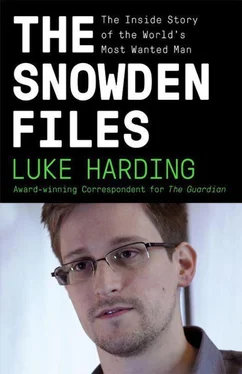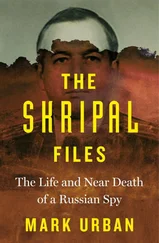At best, the NSA’s activities in Brazil looked distinctly un-fraternal. At worst, they appeared to be a clear-cut example of industrial espionage, and precisely the kind of economic spying the US heartily condemned when the Chinese or the Russians did it. The NSA said it was doing something different, telling the Washington Post : ‘The department does not engage in economic espionage in any domain including cyber.’ In a somewhat pained statement, Clapper insisted that the US didn’t steal trade secrets from foreign entities and pass them to US companies, so as to give them a competitive advantage.
But Clapper’s vague defence of the NSA’s goals did little to assuage Rousseff. In a blistering speech to the UN in September, the president said the US’s now exposed ‘global network of electronic spying’ had caused worldwide anger. Not only was this ‘meddling’ an affront to relations between friendly states, it was a breach of international law, she said. Rousseff stamped on the idea that the NSA was somehow fighting terrorism. ‘Brazil knows how to protect itself,’ she said.
If anything, the US’s southern neighbour Mexico was the subject of even greater intrusion. According to Der Spiegel , the NSA mounted a sophisticated spying campaign against President Nieto, and his pro-US predecessor Felipe Calderón. A special NSA division, Tailored Access Operations (TAO), carried out this delicate mission.
In May 2010, TAO managed to hack into the mail server hosting President Calderón’s public email account. Other members of Mexico’s cabinet used the same domain. The NSA was delighted. It could now read ‘diplomatic, economic and leadership communications’ which provided ‘insight into Mexico’s political system and internal stability’. The operation was called FLATLIQUID. Two years later the NSA was at it again; it managed to read Peña Nieto’s private emails, when he was a presidential candidate, according to Brazil’s TV Globo.
The US’s main clandestine objective in Mexico was to keep tabs on the country’s drug cartels. A secret April 2013 document seen by Der Spiegel lists Washington’s priorities from 1 (high) to 5 (low). Mexico’s drug trade is 1; its leadership, military capabilities and foreign trade relations 3; with counter-espionage at 4. In another August 2009 operation the NSA successfully hacked the email accounts of top officials from Mexico’s public security secretariat, yielding useful information on drug gangs and ‘diplomatic talking points’.
How is this spying done? The NSA, it appears, monitors Mexico’s mobile phone network under an operation called EVENINGEASEL. The NSA’s facility in San Antonio, Texas, is involved, together with US listening stations in Mexico City and Brasilia. The agency’s resources are formidable. In the early summer of 2012, alarmed that Nieto might shift resources away from fighting the drug cartels, the NSA zoned in on Nieto’s mobile phone as well as the phones of ‘nine of his close associates’. Software sifted out Nieto’s most important contacts; they too were then placed under surveillance, Der Spiegel said.
By early 2014 it was clear that the ramifications from Snowden’s revelations were far greater than those caused by WikiLeaks. The publication of secret US diplomatic cables from around the world in late 2010 did have consequences. A handful of US ambassadors were forced to depart; others shifted posts; the cables fed into the Arab Spring, crystallising popular resentment against corrupt regimes in Tunisia, Libya and Egypt. Not all of the consequences were negative. Paradoxically, the reputation of the US foreign service went up. American diplomats, broadly speaking, emerged as intelligent, principled and hard-working. A few had genuine literary talent.
With the Snowden files, however, the consequences were more profound. It felt, slowly and not always coherently, as if the world was re-ordering itself – coming to terms with the fact that the US was spying not just on foreign leaders but on entire civilian populations. The question – for European allies, and for rival authoritarian powers – was how to react? The NSA seemed to view close US allies with shared values and history not really as allies at all. Rather, they were ‘frenemies’, part friend and part enemy.
There were several trends. In the aftermath of the ‘Handy crisis’, Merkel called for a new framework to regulate spying between partners. In the early stages of the Snowden affair the NSA and BND had been trying to patch things up. Now Merkel and Hollande said they wanted a new transatlantic no-spy accord negotiated by the end of 2013. Britain and other EU states were free to sign up to this code of conduct, which would regulate the behaviour of the security and intelligence services.
In the meantime Merkel was keen to get answers – something the Obama administration had been frugal about. In particular she wanted to know the scope of the NSA’s surveillance operations against Germans. There were also lingering questions about her personal situation. Just who had signed off on this? What was the justification?
Documents suggested that the US and its British GCHQ partner were using their embassies abroad as rooftop listening stations to spy on host governments. In Berlin this was especially brazen: the US embassy in Pariser Platz is only a few hundred metres away from the parliament building and Merkel’s office. From here, the NSA and CIA can spy on the entire government quarter. Spiegel branded the antennae bristling from the top of the embassy ‘Das Nest’ .
It was the same story elsewhere. In 2010 the NSA operated 80 embassy spy stations worldwide. Nineteen of them were in European cities, including Paris, Madrid, Rome, Prague and Geneva – where Snowden worked for the CIA. The Americans also had a station in Frankfurt.
Other Five Eyes partners were doing snooping of their own. A Snowden document, published jointly by Guardian Australia and the Australian Broadcasting Corporation, revealed that Australia’s spy agency had eavesdropped on Indonesia’s president Susilo Bambang Yudhoyono, plus his wife, Ani, senior minsters and confidants. The top-secret slide presentation is from Australia’s Department of Defence and the Defence Signals Directorate. It dates from November 2009. Another leak, meanwhile, shows that the NSA spied on 25 heads of state attending a 2010 G20 summit in Toronto. The covert operation was carried out from the US embassy in Ottawa. Canada’s own spy agency, the Communications Security Establishment Canada (CSEC), was closely involved.
Like his German, Mexican and Brazilian counterparts, Indonesia’s president was furious at Australia’s un-neighbourly behaviour. He downgraded diplomatic relations with Canberra, and stopped co-operation on issues such as people-smuggling and boat-people. Australia’s prime minister Tony Abbott refused to apologise. Nor would he confirm if the snooping had taken place. Instead, the debate in Australia was a depressing echo of the one in Britain, with some politicians and Murdoch-owned newspapers attacking the media that broke the story.
In Europe, displeased politicians were trying to formulate a response to the Snowden revelations. The topic dominated an EU summit in Brussels. Merkel told fellow European leaders the issue at stake wasn’t her mobile but what it represented – ‘the phones of millions of European citizens’. German politicians called for talks on a trade agreement with the US to be suspended until the White House responded fully. There were calls to take witness evidence from Snowden in Moscow. And to offer him asylum, something Merkel had declined.
The summit put Britain in a tricky position. David Cameron found himself the target of veiled criticism. He declined to say whether GCHQ had been involved in top-level bugging, or if he had seen a readout from Chancellor Merkel’s mobile. It is highly likely that any information gleaned by the NSA would have been shared with GCHQ. It’s even possible that the eavesdropping was conducted through Menwith Hill, the NSA’s European hub in North Yorkshire. Cameron merely defended Britain’s ‘brave spies’.
Читать дальше












